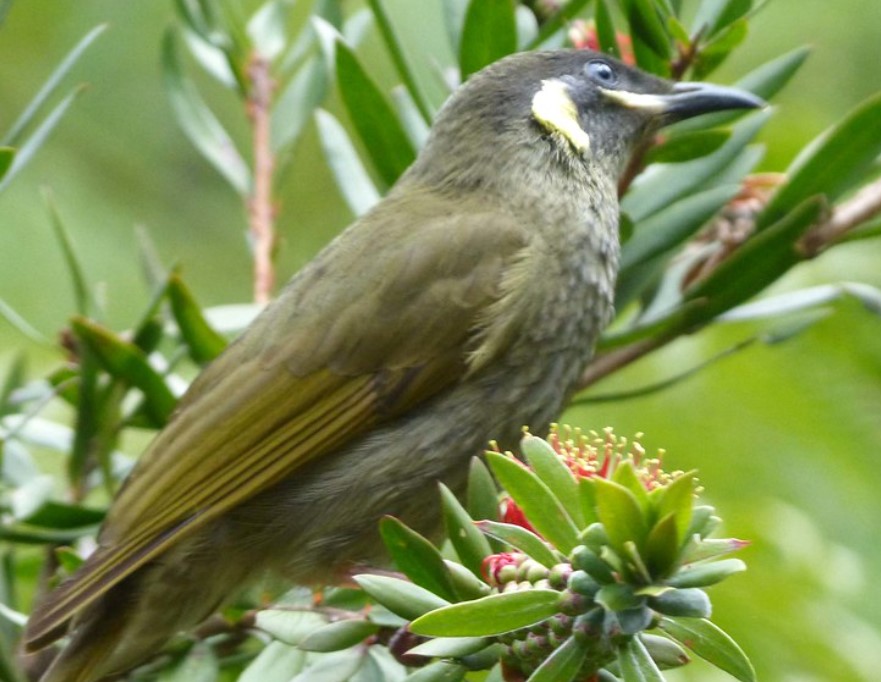Habitat: Lewin’s honeyeater (Meliphaga lewinii) ranges from the Mcllwraith to Melbourne. This magical bird is the most widespread honeyeater in Australia’s eastern coastal rainforests. In the south, it extends down to the coast, and north to Townsville, it keeps to montane rainforest above 200 meters; wherever it occurs, it is rather sedentary. Individuals and pairs hold much of the same territory year-round, which they advertise with distinctive machine-gun chatter throughout the day. Only during the winter do they wander much beyond.

Diet: Lewin’s honeyeaters forage singly or in loose pairs in the mid and upper strata of rainforests, only gathering in larger loose groups to rifle blossom or pick fruit in profusely flowering or fruiting trees. Its diet mainly consists of fruits (especially berries), insects, and nectar. They commonly spiral up trees, picking out insects from crevices in the bark or hovering to glean from the end of a twig. They also visit orchards and gardens, where they feed on paw paws, oranges, and mandarins. Aggressive birds spend much time chasing one another and other species away from feeding places.
Identification: Both sexes are similar; the male is larger. The upper parts, wings, and tail plain are mid- to dark olive-green. The dusky shafts on the back and forehead are washed gray. The line from the base of the bill to below the eye is cream-white; the malar area and cheeks to the edge of ear coverts are dull grey; ear coverts have a flared cream-yellow patch. The underparts are uniformly mid- to pale olive-green with faint dusky gray mottling. The eyes are mid-blue-grey. The bill is black. The gape is cream-white. The feet are gray-horned. The immature (as adults) are fluffier, with dorsal streaking and ventral mottling obscure; their eyes are browner.
Vocalizations: Lewin’s Honeyeater call is loud, rolling staccato chatter, sometimes likened to machine gunfire. The song is a single harsh tchuu-like call of Yellow-spotted Honeyeater but softer.
Nesting and Breeding: Lewin’s honeyeater nesting and breeding occur in August–January. The nest is cup-shaped, made of bark strips, leaves, moss, and cobwebs, measuring 100 x 50 mm, suspended by the rim in foliage 2–6 meters above ground, in a gully, or over a stream.
Eggs: The bird usually lays two or three eggs; cream with red or purple spots forming a zone at the larger end; oval to long-oval, about 26 x 18 mm. The incubation period is about two weeks. Young fledge in 14–15 days. Both parents tend to the fledgling bird.
Distribution: Rainforest and fringing growth on the east coast and ranges between Mcilwraith Range, Queensland, and Melbourne. Moreover, in the winter months, some altitudinal migration occurs to lower elevations.
Alternative Names: It is also known as Yellow-eared Honeyeater, Bananabird, Brasseye, Orangebird. The bird’s name is attributed to the Australian artist John Lewin.
Size: Lewin’s Honeyeater size measures about 190–210 mm in length.
Races: There are two races: one in Mcilwraith Range and the other everywhere else.
Read More: Blue-faced Honeyeater







